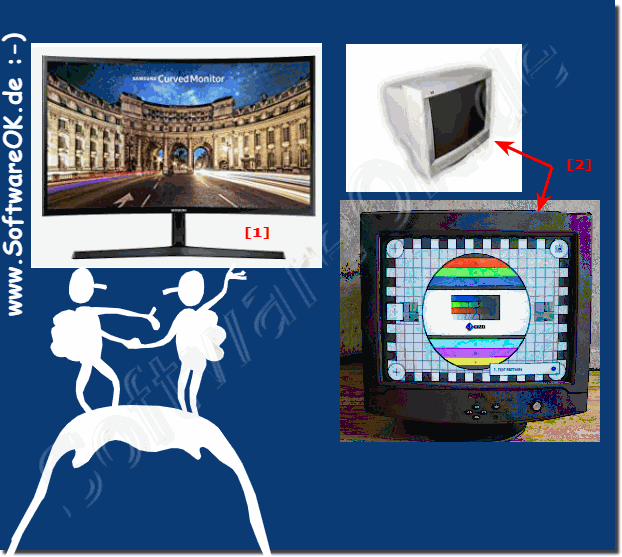A flat screen is hardly known as an identifier for today's monitors, televisions, tablets, ... etc. after the conversion from tube monitors to LCD, TFT, LED, ... !Contents: 1.) ... short explanation of flat screens!
|
| (Image-1) Flat screen and CRT monitors! |
 |
2.) More detailed information about flat screens!
A flat screen typically refers to a type of display or monitor with a flat, thin, and relatively lightweight design, as opposed to older CRT (cathode ray tube) displays, which were bulky and had a curved glass front. Flat panel displays are commonly used in televisions, computer monitors and various other electronic devices where display is required.
There are several types of flat panel technologies, including:
LCD (Liquid Crystal Display): LCD screens use liquid crystals to control the passage of light through the display panel. They are commonly used in laptops, computer monitors and television screens.
LED (Light Emitting Diode): LED screens are a type of LCD that use an LED backlight to illuminate the display. LED displays are energy efficient and offer improved color accuracy and contrast.
OLED (Organic Light Emitting Diode):OLED screens use organic compounds to emit light when electrical current is applied. OLED displays are known for their deep blacks, high contrast ratio and flexibility, making them suitable for use in smartphones, televisions and even curved or flexible displays.
Plasma: Although less common today, plasma displays use small cells containing electrically charged ionized gases to emit light. They were often used in larger televisions, but have largely been replaced by LED and OLED technology.
Due to their slim profile, energy efficiency, and superior image quality compared to older CRT displays, flat panel displays have become the standard for most modern electronic displays. They have revolutionized the way we consume media and interact with digital content.
FAQ 292: Updated on: 6 October 2023 19:37
